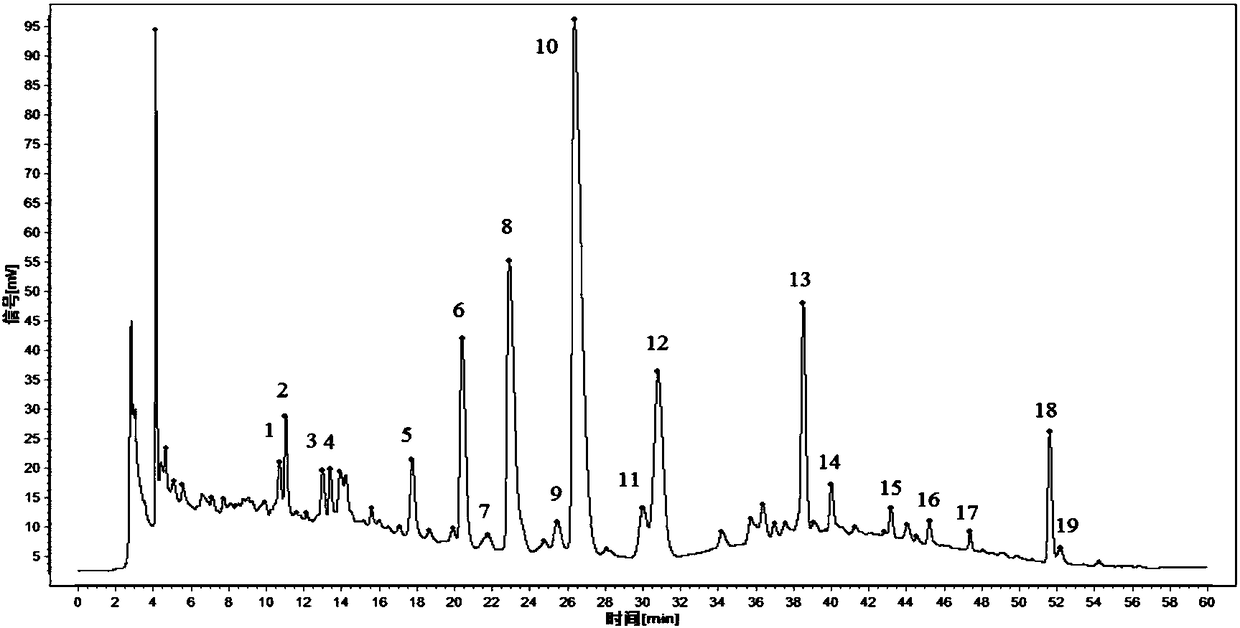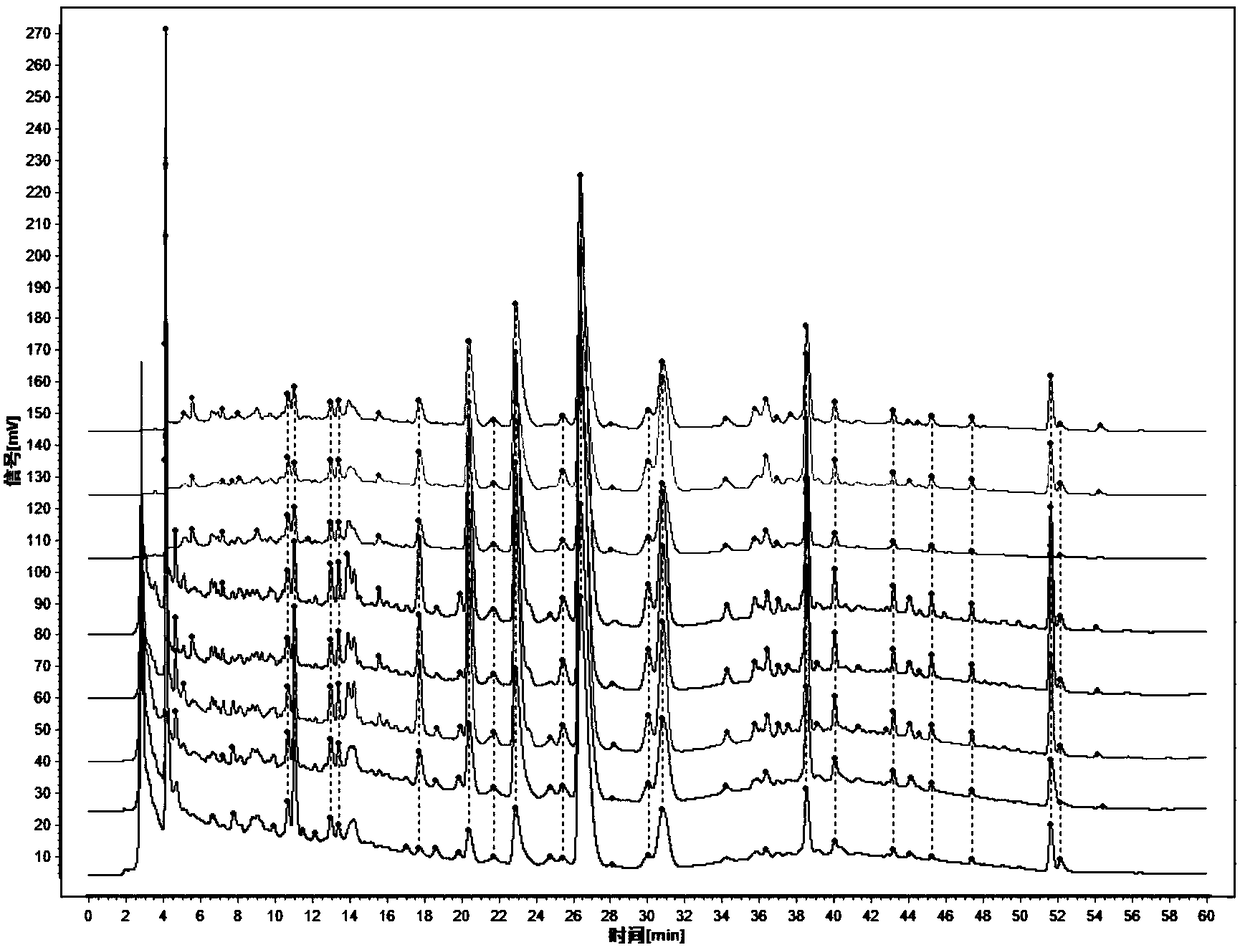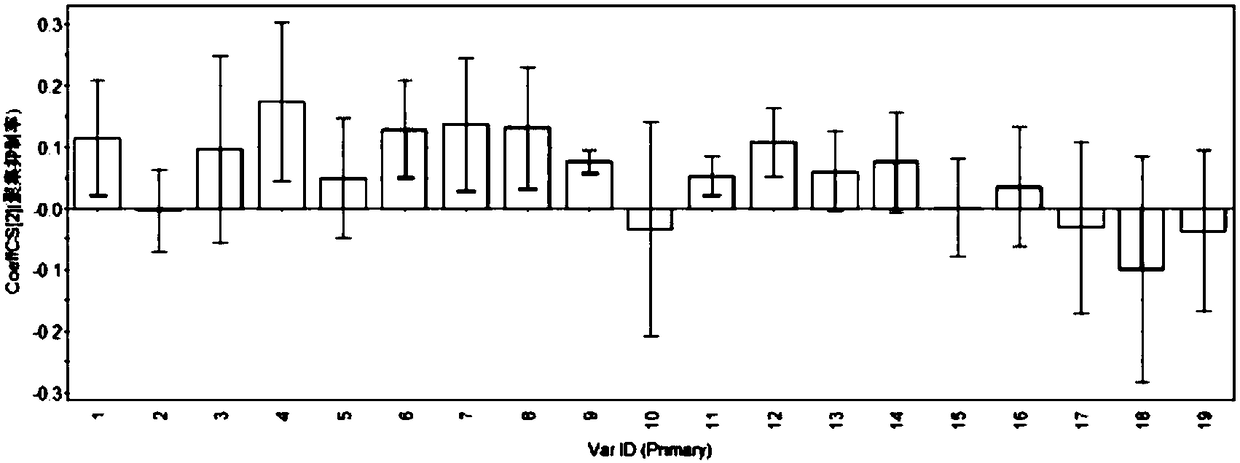Method for evaluating chemical composition of Rosa xanthina on basis of antithrombotic spectrum-effect relationship
A technology of chemical composition and evaluation methods, applied in scientific instruments, material separation, analysis of materials, etc.
- Summary
- Abstract
- Description
- Claims
- Application Information
AI Technical Summary
Problems solved by technology
Method used
Image
Examples
preparation example Construction
[0043] The first step, preparation of the test solution: take an appropriate amount of Rosa japonica and properly pulverize it, accurately weigh 6 parts of coarse powder, each 100g, place it in a round bottom flask, add 10 times the volume of water, 30% ethanol, 50% ethanol, 70% ethanol and 90% ethanol, reflux extraction for 1 hour, extract twice, filter, combine the filtrate, the filtrate is recovered solvent, and vacuum dried to obtain a dry extract; weigh an appropriate amount of recovered solvent dry sample, dissolve in water Then go to macroporous resin chromatography column, elute with 40%, 60%, and 80% ethanol solution respectively, collect each eluted part, recover the solvent, and dry in vacuum to obtain a dry extract;
[0044] The second step, the establishment of the fingerprints of rose thorns: adopt high performance liquid chromatography to measure the fingerprints of the samples obtained in step one; chromatographic conditions: the chromatographic column adopts oc...
Embodiment 1
[0070] 1 Experimental method
[0071] 1.1 Establishment of fingerprints
[0072] 1.1.1 Preparation of the test product
[0073] Take an appropriate amount of Rosa japonica and crush it properly, accurately weigh 6 parts of coarse powder, each 100g, put it in a round bottom flask, add 10 times the volume of water, 30% ethanol, 50% ethanol, 70% ethanol and 90% ethanol respectively Ethanol, reflux extraction for 1 hour, extraction twice, filtration, combined filtrates, solvent recovery and vacuum drying of filtrates to obtain dry extracts, samples were recorded as S1-S5, and set aside. Weigh an appropriate amount of sample S4, dissolve it in water, put it on a macroporous resin chromatography column, and elute with 40%, 60%, and 80% ethanol solution respectively, collect each eluted part, concentrate under reduced pressure to a dry extract, and set aside, sample number It is S6~S8.
[0074] Take 1g of each sample from S1 to S5 (equivalent to 10g of raw material), take 0.1g of ...
Embodiment 2
[0117] 1 Experimental method
[0118] 1.1 Establishment of fingerprints
[0119] 1.1.1 Sample preparation
[0120] Take an appropriate amount of Rosa japonica and crush it properly, accurately weigh 6 parts of coarse powder, each 100g, put it in a round bottom flask, add 10 times the volume of water, 30% ethanol, 50% ethanol, 70% ethanol and 90% ethanol respectively Ethanol, reflux extraction for 1 h, extraction twice, filtration, combined filtrate, filtrate recovered solvent, vacuum drying to obtain dry extract, samples were recorded as S1-S5, and set aside. Weigh an appropriate amount of sample S4, dissolve it in water, put it on a macroporous resin chromatography column, and elute with 40%, 60%, and 80% ethanol solution respectively, collect each eluted part, concentrate under reduced pressure to a dry extract, and set aside, sample number It is S6~S8.
[0121] Take 1g of each sample from S1 to S5 (equivalent to 10g of raw material), take 0.1g of each sample from S6 to S...
PUM
 Login to View More
Login to View More Abstract
Description
Claims
Application Information
 Login to View More
Login to View More - R&D
- Intellectual Property
- Life Sciences
- Materials
- Tech Scout
- Unparalleled Data Quality
- Higher Quality Content
- 60% Fewer Hallucinations
Browse by: Latest US Patents, China's latest patents, Technical Efficacy Thesaurus, Application Domain, Technology Topic, Popular Technical Reports.
© 2025 PatSnap. All rights reserved.Legal|Privacy policy|Modern Slavery Act Transparency Statement|Sitemap|About US| Contact US: help@patsnap.com



